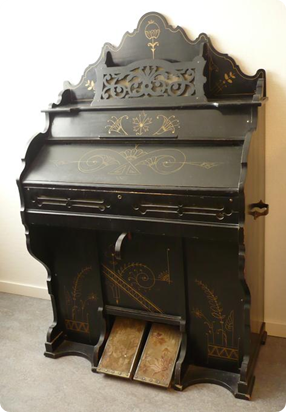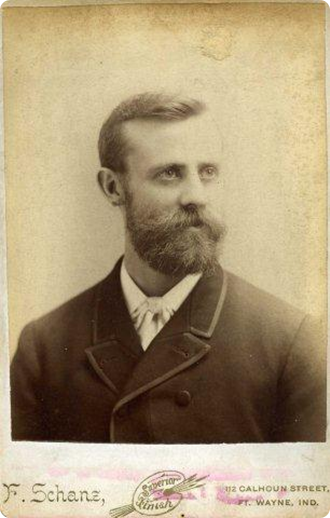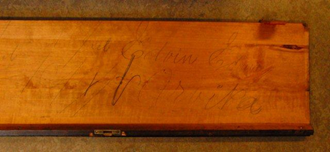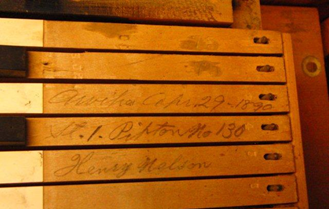A.N. Östlind Arvika, drawing room organ serial no 130 (KH 145)
 |
Anders Nilsson Östlind established his reed organ factory in Arvika in 1888 and ran it initially with a few workers. In 1891, the dealer Anton Almquist from Gothenburg entered the firm as a partner by which the company Östlind & Almquist was founded. There are difficulties of surveying the production during these early years before 1891, since the first catalogue was published in 1891, when the new company presented itself to the market. Reed organs having the signature A.N. Östlind Arvika are rather uncommon. Thus, we are especially pleased to find the organ with workers signatures inside which tell something about how the factory work was organized in the first Östlind workshop.
The organ is a small piece of instrument painted black with hand painted golden decorations inspired from the US. At the underside of the fallboard the signature of the case maker is found: ‘Axel Edvin Edman Arvika A1’. On the lowest keys behind the name board there are some valuable pencil notations casting light on the date and construction of the instrument, and in the middle of the keyboard one word is written – ‘finnished’ [sic]. |

Photo of Henry Nelson taken in his American period.
|

Case maker signature on the underside of the fallboard. “A1” is written upside down.

The annotation ‘Arvika Apr. 29 1890’ on the D key discloses an exact date when the organ was finished, and ‘St. 1. Pipton nr 130 [1 piece of pipe tone no 130]’ on the D# key gives the serial number and the construction. The name of the assembler ‘Henry Nelson’ is written on the E key with his own hand.
|
Håkan Nilsson or Henry Nelson that he called himself after the years in the US where he learnt the organ building profession at Fort Wayne, Indiana, was a brother-in-law of Östlind. With good reason it may be supposed that he brought American methods of organizing the factory work, and probably certain building details were imported from the US, indicated by an oval stamp on the key, now unfortunately illegible.
Close to the signature on the name board there is a proud information ’Patent’. It has reference to the patent no. 2497 ‘Device on organs’ taken by Östlind on the 30th of December 1889 and ‘refers to a device on reed organs by which the tone color is made similar to that of a pipe organ’.
Klaverens Hus, Hemmansvägen 11 826 62 NORRALA
+46722820431
info@klaverenshus.se www.klaverenshus.se





